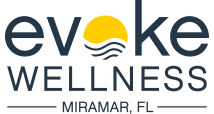Addiction and alcoholism both usually follow a predictable pattern. The Jellinek Curve is a visual representation of the stages of addiction/alcoholism that most people go through when struggling with a substance abuse issue. Originally created to explain alcoholism, it has been modified to also apply to addiction. 
Addiction/Alcoholism And The Jellinek Curve
A psychologist created the Jellinek Curve from Yale University named Elvin Morton Jellinek in the 1940s. As part of his work, he surveyed thousands of alcoholics about their experiences and noticed a pattern. Addiction/alcoholism are progressive diseases, the Curve can be used to identify the events and circumstances that happen as a result of them. Based on his research, Jellinek was convinced that addiction is a disease and not a moral shortcoming, and he helped to discover how it would be approached and treated in the future. Years later, another specialist in the addiction field noticed that people in recovery have everyday experiences going through their journey. So he added his findings to the Curve, how the U-shaped chart’s right uphill slope was created.
The Different Phases of Addiction/Alcoholism
The Jellinek Curve can track the phases of addiction/alcoholism with any substance that can cause physical or mental dependence. The Curve follows a downward spiral or slope during the addiction phase, and once the recovery phase has started, things start going back uphill. It can be separated into three main phases.
- Crucial Phase – The crucial phase is the beginning of the addiction. This is when things start and begin to take hold. For example, it may start with social drinking or taking a prescription after a surgery or injury. It then progresses occasionally takes for relief followed by increased dependence, guilt, loss of willpower, and avoiding social situations. This then turns into increased use and the inability to restrict use or take anything in moderation. This represents the left downward side of the Curve.
- Chronic Phase – The chronic phase is at the bottom of the U-shaped curve; there is a loop here. This represents the cycle of addiction when a person gets further and further down and is obsessed with use. It becomes a vicious cycle of dependence, and it’s really hard to pull out of.
- Rehabilitation Phase – The last phase or right upward side of the curve represents the rehabilitation phase. This is when the individual really wants help for their addiction and seeks out treatment. As the body starts detoxing, the mind starts becoming clear again, and a new life emerges. New connections are made, self-esteem starts to rebuild, courage is gained, and a strong support system is made. The rehab process is a journey. It’s not easy, but sobriety is gained with the will, hard work, and determination, and a new life has developed.
The Jellinek Curve And Recovery
The Jellinek Curve can be used to track progress in recovery for any substance and with any form of treatment. It offers hope to those that have lost all hope in the depths of addiction/alcoholism. It shows that recovery is possible with the right treatment and support.
Start Treatment for Addiction/Alcoholism at Evoke Wellness at Miramar
Evoke Wellness at Miramar offers cutting-edge addiction treatment programs. Our facilities in South Florida are committed to helping clients throughout the whole treatment experience. Our premier medical detox will help you comfortably get through the detox process and onto residential treatment under our professional care. So you don’t have to suffer any longer. Let Evoke Wellness assist you on the road to long-lasting recovery.


